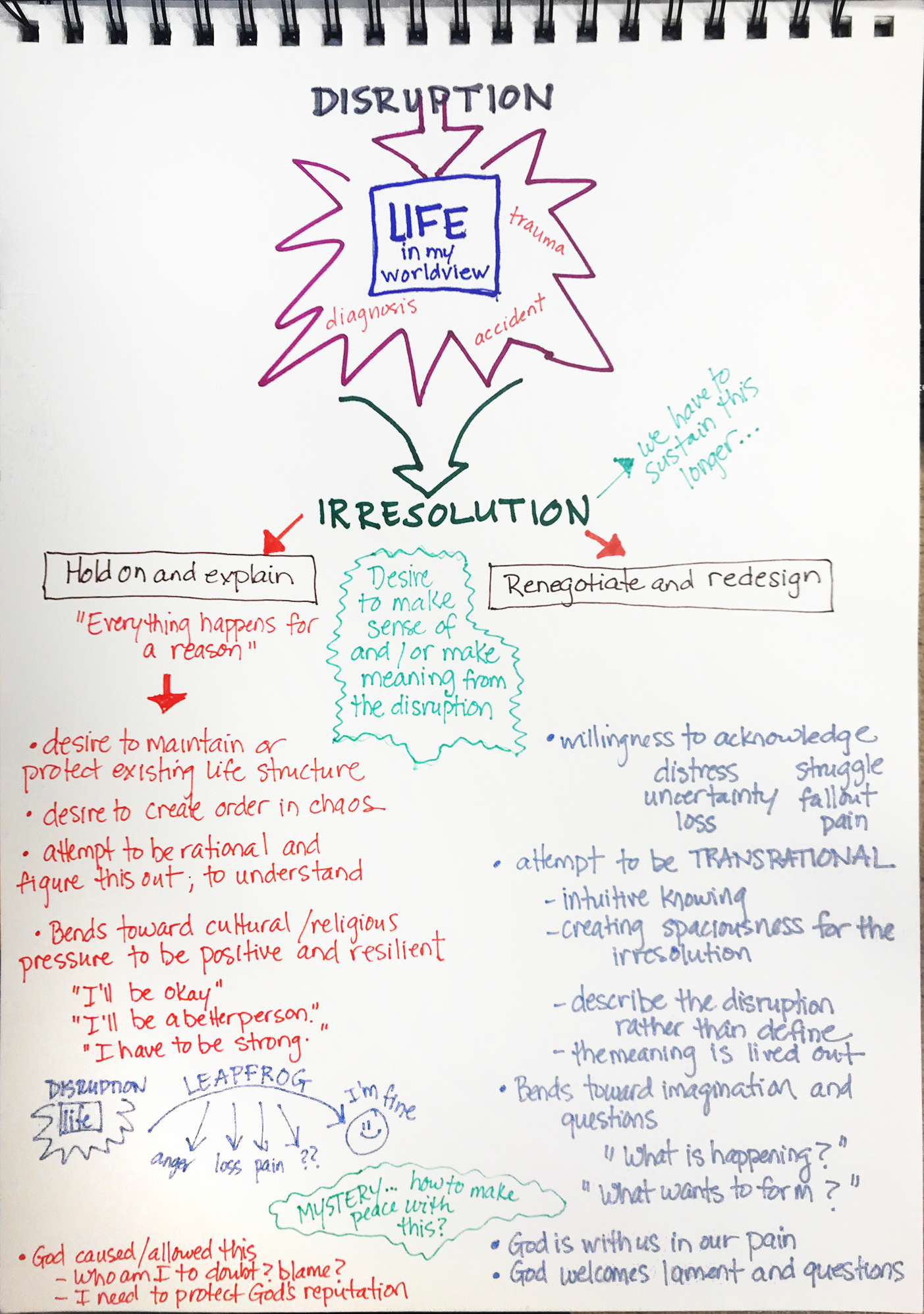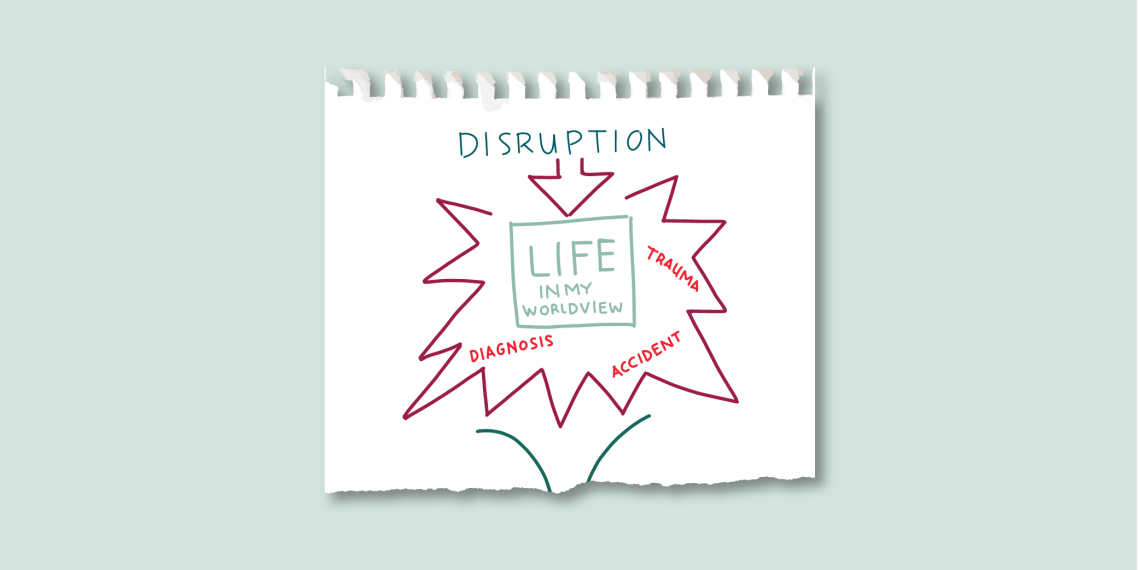haplaincy found me. I’d been doing various forms of ministry most of my life, and I knew I wanted a career that combined art and theology, creativity and spirit. I attended some art and soul workshops offered by an Episcopal priest. This wise woman showed me that when you’re creating art, you’re becoming more vulnerable, open, and willing to share. When the priest pointed me towards chaplaincy, I felt as if she’d heard my heart and my voice.
Most of my work doesn’t revolve around religion, it revolves around relationships. I want to be present for our patients and employees and help them move through and beyond their discomfort. I invite people to tell me what they need, and I make sure they’re heard.
Especially now, in the heart of this pandemic, we need to understand how to live with grief. Managing discomfort often means moving towards the pain, not away from it.
What do Chaplains do?
As part of the health care team, chaplains work directly with patients through the duration of their treatment. Whereas doctors generally take care of their patients’ physical world, we accompany our patients through their interior, or spiritual, world.
While we possess a broad base of religious knowledge, we encourage patients to teach us about their unique perspectives. We strive to serve both our patients and our hospital employees. If anyone requires our services, they can contact us directly through our faith line at 801-213-2484.
The COVID Elephant
A hospital’s environment is both chaotic and ordered. COVID has disrupted the fragile balance between chaos and order, and both our patients and our employees are struggling to maintain a semblance of control over their lives.
Even on bad days, employees push themselves to be stronger and more compassionate for their patients. We constantly remind ourselves that it’s not our worst day, we’re just working. We’ll be okay, because it’s somebody else’s worst day—that’s why they’re here. But in the midst of this virus, we’re asking workers to maintain that same positivity and engagement with patients, even though they’re struggling to stay strong in their own lives.
Similarly, our patients are experiencing heightened levels of stress and uncertainty in the face of COVID. Whether they’re dealing with the loss of a loved one, coping with a crushing diagnosis, or bringing a new life into this world, our patients are now forced to handle these challenges alone.
We're doing everything we were doing before, but with an elephant on our back. Our work, which took plenty of energy before, now carries the COVID elephant. We feel heavier and slower. It’s harder to breathe. Under the oppressive weight of this pandemic, we do whatever we have to to not fall apart. We revert back to a phrase that promises to make us feel better: “Everything happens for a reason.”
The problem with that phrase
What’s wrong with the everything-happens-for-a-reason mindset? This phrase isn’t a solution, it's a way to try to make us feel better without actually dealing with the source of our anger, fear and frustration.
We’re not good at experiencing or sustaining pain. We tend to do whatever we can, as fast as we can, to make the pain stop. By claiming that “everything happens for a reason,” we’re trying to convince ourselves that this horrible thing must somehow be okay, so we must be okay.
But this line of thinking puts a lid on our experiences. Our lives have been blown apart by this huge disruption, and we’re rushing to regain control and return to what was familiar and comfortable. Our whole way of functioning in this world revolves around our sense of security. When something disastrous or unpredictable, like COVID, strikes, and we can’t understand the “why” behind the catastrophe, we unconsciously try to justify or explain it away.
More than anything, we want to get back to our normal lives as quickly as possible. Our culture values independence, popularity, and resiliency. While these can be wonderful qualities, we often convince ourselves that we have to personify these traits all the time. When we hurry to prove to the world that we are resilient, independent, and inspiring, we involuntarily suppress our emotions and rush through the healing process.
The solution is to embrace discomfort
We can’t just blast through these horrible human experiences. We can’t always be amazing, or inspirational, or the poster child for recovery. Instead, we need a space where people can express their frustration, anger, and pain without fear of judgement.
We can embrace our discomfort in three ways.
Step 1: Acknowledge your feelings of distress, uncertainty and pain. Focus on experiencing your emotions, rather than trying to figure them out.
Step 2: Attempt to be transrational. Recognize that, by trying to rationalize your situation, you’re only trying to push through the healing process and feel better. Create space to acknowledge your pain, and concentrate on describing the disruption, rather than defining it.
Step 3: Ask pertinent questions. Instead of leapfrogging over your negative emotions and explaining away your pain, unpack your feelings of discomfort by sustaining your pain and breathing through it.
By consciously experiencing our discomfort and owning it, we can become truly resilient.
Remember, you’re not alone
These trying times have left us all sad and broken and wounded and hurting on some level. There is no quick fix. We can work through these disruptions by making space for them, asking questions, and taking time to sustain and acknowledge our emotions. Ultimately, true strength is determined by our patience and courage
Saundra illustrates the process of creating space for discomfort.

*Originally published Nov. 5, 2020
Saundra Shanti
Resiliency Center Director and clinical psychologist Megan Call explains how leaders can use Better U survey data to understand how stress and burnout impacts their team and provides ways to take appropriate action.
GME Wellness Director Rob Davies explores the practice of gratitude journaling—writing down “three good things” every day for two weeks. This simple exercise can profoundly impact your overall sense of wellbeing.
We’re all managing unprecedented stress and fear. What is “normal” right now? How do I cope? Social worker Jean Whitlock describes how our body protects us and offers some strategies to help.
